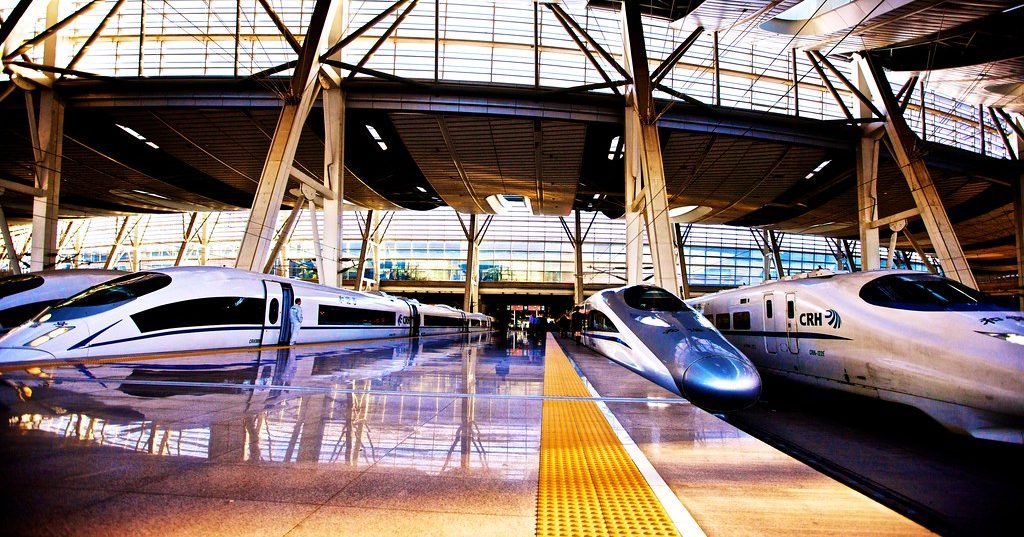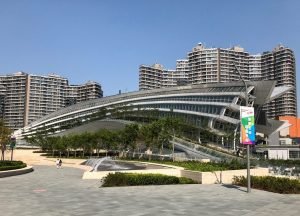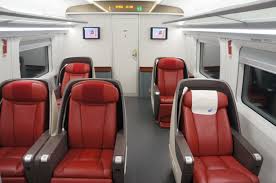
If you are like most travelers, the flights to China and back are perhaps the least exciting part of your trip. Depending on your point of departure, you’ll likely have to sit through a 10+ hour flight just to reach the first destination in your tour of China – typically Beijing, Shanghai or Hong Kong. After enduring a couple of days of jetlag, you may not fancy boarding another flight for the next city in your itinerary. Fortunately, at 112,000 kilometers (almost 70,000 miles), China now boasts the longest rail network in the world. Of this, China also leads the world in high-speed rail with a 30,000 kilometer (around 18,000 mile) network. To put this into a global perspective: it’s more high-speed rail than every other country in the world combined. If this network was transplanted to the United States, there would be enough high-speed rail track to zig-zag across the country from Seattle to New York to San Francisco to Philadelphia to Los Angeles to Miami, with an extra 4,000 miles to spare. Also commonly referred to as bullet trains, these typically reach speeds of 350km/h (210 miles per hour) and offer a true alternative to domestic air travel.
Kowloon West Station
As if it weren’t enough, the network is still being expanded, with ambitious projects reaching across to the remote western provinces of Tibet and Xinjiang. With such proportions, it’s no surprise to see how high China’s rail usage is: in 2019 it was estimated that 3.57 billion trips were made on rail in China, with about 2.29 billion of those on high-speed trains. Many of these are short trips connecting major metropolitan areas such as Beijing with Tianjin (120km in 30 minutes) in northern China, Shanghai and Hangzhou (175km in one hour) in eastern China, and Hong Kong with Shenzhen (30km in 15 minutes) or Guangzhou (130km in 50 minutes) in the south (note: immigration formalities will take place at Hong Kong’s Kowloon station). In fact, whereas flights between certain destinations may be limited (for example between Guilin and Hong Kong, which are not daily) – there are multiple daily railway options instead.
In terms of cross border journeys, Hong Kong is the only high speed option at present, but China otherwise maintains passenger connections with Hanoi (Vietnam), Almaty (Kazakhstan), Ulan Bator (Mongolia), Moscow (Russia) and Pyongyang in North Korea. There’s also a greater frequency of intercontinental freight trains, reaching as far as London, as part of China’s recent Belt and Road initiative.
Flying may still be the most convenient option for covering larger distances, for example from Beijing to Chengdu, but most destinations on the tourist trail easily connect by train. For example, a trip from Beijing to Xi’an, home of the world-renowned Terracotta Warriors, can take as little as 4 hours and 20 minutes by high-speed railway. Although that’s twice as long as a flight, the train stations are closer to downtown, which means you’ll spend less time on transfers, and shorter check-in/security times apply, making door-to-door journey times almost the same. There is no sacrifice in comfort either, with Business Class on high-speed trains featuring fully reclining seats offering more space than most First Class flights, and with luggage allowances more generous. (Note: Business Class is the highest category on Chinese trains and superior to First Class).
Business Class Carriage
As added bonuses, traveling by rail is more environmentally friendly than air-travel, and the trains typically run right on time – something which unfortunately can’t be said about domestic flights!
Whereas booking Chinese trains can be a challenge (sales begin only one month prior to departure, require payment in China, and copies of your passport) – our team of Itinerary Designers would be more than happy to assist with this, in addition to talking you through the best options available. If air is still your preferred mode of transport, you can also sample the world’s fastest train: Shanghai’s Maglev. This “floating, trackless train” will whisk you the 30 kilometers (18 miles) between Shanghai’s main international airport in Pudong and downtown Shanghai in a mere 8 minutes, reaching a top speed of 430 kilometers (about 268 miles) per hour.
If, on the other hand, you’d like to slow down, there is always the 40 hour train from Beijing to Lhasa, or a 24 hour traditional train from Hong Kong to Beijing! Both will ensure you have plenty of time to soak in every inch of China’s wondrous natural landscape. However, neither are luxury travel experiences nor journeys we would recommend.
In any case, the choices abound.
– Jaime is one of Imperial Tours’ Itinerary Designers.